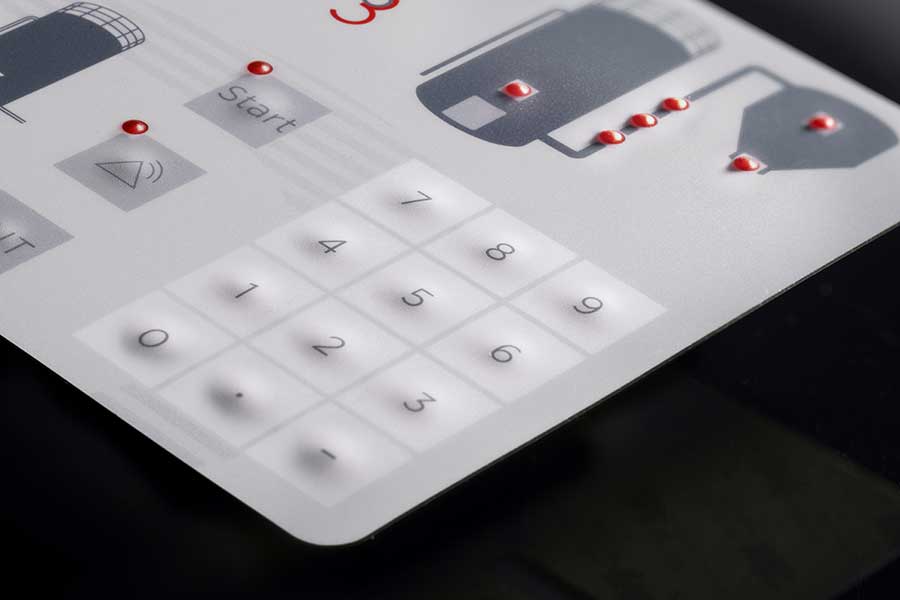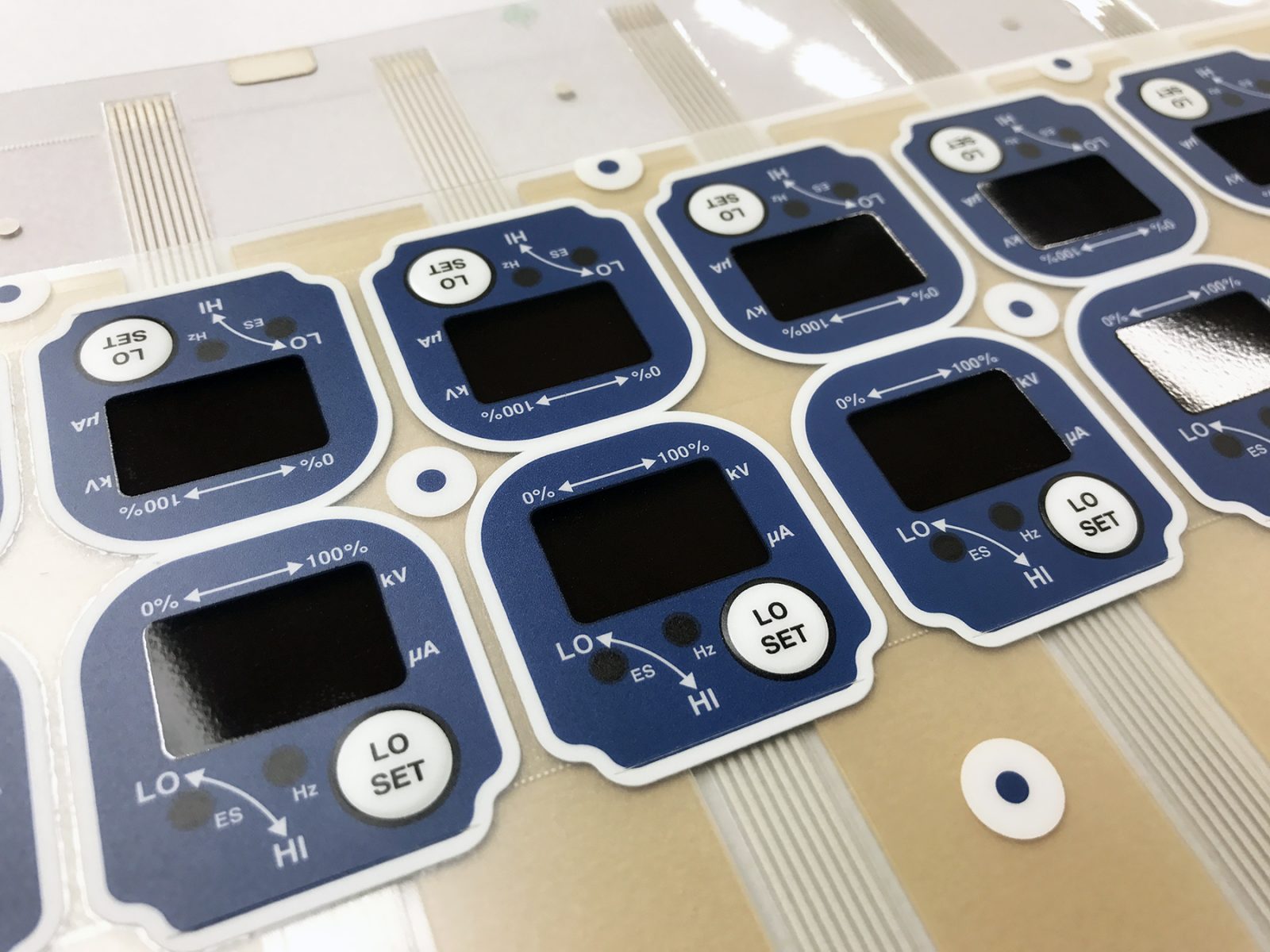Membrane Switches in the Aerospace Applications: Major Applications and Benefits
Membrane Switches in the Aerospace Applications: Major Applications and Benefits
Blog Article
Membrane Layer Change Technology: The Secret to Trustworthy and Affordable User Interfaces
Membrane button innovation has actually emerged as a crucial element in the design of user interfaces, offering both integrity and cost-effectiveness across a varied array of applications. As we explore the complex advantages of membrane layer buttons, their capacity for development elevates questions regarding future applications and progressing trends.
Recognizing Membrane Layer Change Innovation
Membrane switch modern technology is a widely utilized interface service in different electronic devices, using a smooth blend of capability and layout. This innovation includes numerous layers of materials, usually consisting of a graphic overlay, spacer layer, and a circuit layer. The visuals overlay presents the interface elements, while the spacer layer separates the circuit layer from the overlay until an individual turns on a switch.
When stress is related to the overlay, the circuit layer finishes the electrical circuit, sending a signal to the device. This system enables various arrangements, consisting of responsive responses and backlighting alternatives, enhancing customer communication. Membrane layer buttons are commonly manufactured making use of long lasting products such as polyester or polycarbonate, making sure durability and resistance to environmental elements like moisture and dust.
The versatility of membrane switches over enables their application in diverse sectors, including clinical gadgets, customer electronics, and commercial controls. Their portable layout permits assimilation into space-constrained settings, offering an effective customer interface without jeopardizing aesthetic allure. Recognizing the complexities of membrane button technology is crucial for manufacturers and developers seeking to develop dependable and efficient human-machine user interfaces.
Key Benefits of Membrane Buttons
While various user interface services exist, membrane layer changes offer distinctive benefits that make them a preferred choice in many applications. One of the primary benefits is their sturdiness; membrane switches are made to withstand severe environmental conditions, consisting of dampness, dust, and temperature fluctuations, guaranteeing lasting efficiency. This durability considerably minimizes the demand for regular replacements, consequently reducing total upkeep costs.

Additionally, membrane buttons are lightweight and small, making them appropriate for applications where room is restricted. Their inconspicuous style adds to a smooth appearance without endangering capability.
Cost-effectiveness is additionally a notable advantage, as the production process for membrane switches over tends to be cheaper contrasted to standard mechanical buttons. This affordability, combined with their reliability and ease of link installment, settings membrane switches over as a functional service for a variety of sectors looking for effective and effective individual interfaces.
Applications Across Various Industries
Just how do membrane layer switches adjust to the varied needs of numerous markets? Membrane layer switch innovation is significantly recognized for its flexibility, making it suitable for a wide array of applications use this link across numerous fields.
In consumer electronic devices, membrane buttons offer a portable remedy for push-button controls and home devices, boosting user experience via user-friendly layout. Additionally, the industrial industry leverages membrane buttons for machinery control panels, gaining from their resistance to harsh environments, such as dampness and dust.
Army and aerospace applications additionally utilize membrane buttons for their dependability and ability to withstand severe conditions, ensuring functional efficiency in critical scenarios. The food and beverage industry takes on these buttons for automated systems, where cleanliness and ease of procedure are critical (membrane switch). Inevitably, membrane buttons are customized to meet the one-of-a-kind needs of each sector, proving their essential role in contemporary innovation user interfaces
Style and Modification Options

In the realm of membrane layer button technology, layout and customization options play a crucial role in boosting functionality and individual communication. These switches can be tailored to satisfy specific operational needs and aesthetic choices, making them versatile Click Here components in various applications.
One of the primary personalization alternatives is the design of the switch itself, which can be developed to suit distinct interface and ergonomic considerations. By changing the shape, dimension, and arrangement of switches, producers can develop instinctive layouts that facilitate ease of use. In addition, the unification of different colors and graphic overlays permits branding and boosted exposure, guaranteeing that individuals can rapidly recognize functions.
Additionally, membrane layer switches can be crafted with numerous responsive responses mechanisms, such as increased buttons or distinct clicks, to improve the customer experience. Different materials can additionally be chosen for sturdiness and environmental resistance, resolving elements such as moisture, temperature changes, and chemical exposure.
Ultimately, the extensive layout and personalization choices readily available in membrane switch technology encourage organizations to create tailored remedies that not only satisfy functional requirements yet additionally line up with their branding and functional requirements.

Future Fads in Membrane Layer Buttons
As membrane layer button technology continues to evolve, future fads are significantly concentrated on improving user experience and integrating advanced capabilities. One considerable pattern is the assimilation of touch-sensitive and capacitive innovations into typical membrane layer switches. This advancement permits for more user-friendly interface, offering responsive comments while keeping a sleek style.
Another emerging fad is the use of ecologically pleasant materials, driven by the growing need for lasting production practices. Manufacturers are seeking to lower their carbon impact by using recyclable substrates and low-impact inks, straightening with worldwide sustainability objectives.
In addition, the increase of the Internet of Things (IoT) is prompting the consolidation of smart features into membrane layer switches. Boosted connectivity choices will allow tools to communicate with each other, permitting smooth assimilation right into broader systems.
Furthermore, advancements in printing innovations, such as electronic printing, are allowing for higher design adaptability and customization. This enables producers to create intricate designs and vivid colors cost-effectively.

Final Thought
To conclude, membrane button technology represents a vital development in interface layout, supplying considerable advantages in resilience, customization, and cost-effectiveness. Its extensive applicability throughout varied markets underscores its relevance in contemporary innovation. As developments remain to arise, especially in touch-sensitive user interfaces and sustainable products, the potential for membrane layer changes to improve user experience and capability remains encouraging. Continued expedition of this modern technology will likely generate further improvements and broaden its extent in future applications.
Report this page